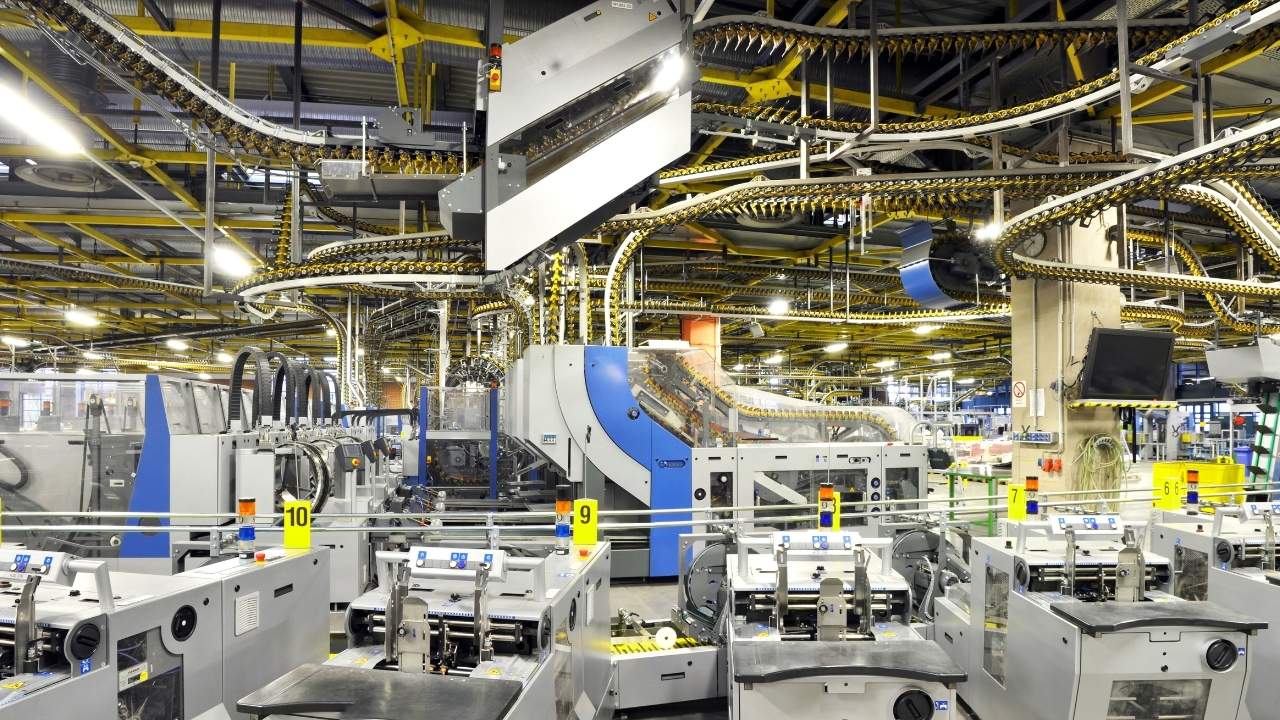While the whole may be greater than the sum of its parts, in the manufacturing industry, the “parts”—including raw materials, work-in-progress items, finished goods, packaging materials, and maintenance supplies—are essential for producing the right products in the right quantities at the right time to meet demand. Any shortfall can lead to lost sales, under- or overproduction, operational inefficiencies, cash flow issues, and other problems that undermine the financial health of the manufacturer.
This is why effective inventory management is critical for manufacturers. This article presents nine strategies for managing inventory and offers nine tips to help control costs and maximize profits.
What Are Manufacturing Inventory Management Strategies?
Manufacturing inventory management strategies are techniques used by manufacturing companies to monitor, control, and optimize their inventory levels. Some strategies focus on the timing of inventory arrivals from suppliers, while others emphasize the importance and value of the inventory. Effective inventory management is crucial for keeping production lines running smoothly and efficiently, ensuring orders are fulfilled on time, and minimizing the costly issue of excess stock.
Key Takeaways
- Effective inventory management is crucial for manufacturers, as it directly impacts their financial health.
- Manufacturers have several strategies available for inventory management, including just-in-time inventory management, ABC analysis, and average costing.
- Inventory management systems enable manufacturers to track inventory in real time, ensuring they can consistently meet demand.
Manufacturing Inventory Management Strategies Explained
Manufacturing inventory management strategies are essential for controlling and optimizing inventory levels to prevent the financial pitfalls of having too much or too little stock. Excess inventory can lead to high carrying costs, potential losses from spoilage or obsolescence, and cash being tied up in stagnant inventory instead of being used to grow the business, such as by purchasing additional production equipment. Conversely, an inventory shortage can cause stockouts, prompting customers to take their business elsewhere and resulting in lost revenue.
These issues can also negatively affect a manufacturer’s cash flow, profitability, and long-term financial health. However, with the right inventory management strategy, manufacturers can better align their inventory with demand, identify problems before they disrupt production, boost sales (including from repeat customers), reduce costs, and strengthen supplier relationships.
Moreover, improved inventory control leads to more accurate inventory data. This data, along with historical data and market trends, allows manufacturers to better anticipate demand and make more informed strategic decisions.
9 Inventory Management Strategies for Manufacturing
For manufacturers to keep production lines and supply chains running smoothly, accurate inventory tracking and management are crucial. The choice of inventory management strategy depends on the manufacturer’s goals, the industries they serve, and the products they offer. The following strategies can enhance efficiency while minimizing waste and lost opportunities:
-
Just-in-Time (JIT) Inventory Management:
This “lean” strategy ensures a manufacturer holds just enough stock to meet customer demand, reducing production and carrying costs. However, it relies on dependable suppliers and can be vulnerable to supply chain disruptions.
- First In, First Out (FIFO):
FIFO prioritizes using the oldest inventory first, making it ideal for products with a shelf life, such as batteries and medication. This approach helps prevent spoilage and obsolescence.
- Last In, First Out (LIFO):
Opposite of FIFO, LIFO uses the most recently acquired inventory first. This strategy can be beneficial during inflationary periods by allowing manufacturers to recoup investments quickly and gain tax benefits from a higher cost of goods sold.
-
Economic Order Quantity (EOQ):
EOQ calculates the optimal order size to avoid having too much or too little inventory. This strategy, useful for manufacturers with consistent inventory needs, considers annual demand, order costs, and holding costs to determine order quantities.
- Weighted Average Cost (WAC):
WAC averages the cost of all inventory items, rather than using per-unit costs. This method mitigates cost fluctuations and helps maintain stable pricing for customers.
- Cycle Counting:
This auditing process involves regularly counting select batches of inventory to ensure physical inventory matches records. It helps resolve discrepancies and improve accuracy for both accounting and operational purposes.
-
ABC Inventory Analysis:
This method categorizes inventory based on its importance in terms of demand, cost, and risk. “A” items are the most valuable and prioritized over “B” and “C” items for stocking and reordering decisions. It is also useful for cycle counting.
- Consignment Inventory Management:
In this strategy, the manufacturer (consignor) provides goods to a customer (consignee) who takes possession without immediate payment. The manufacturer retains ownership until the goods are sold, reducing carrying costs.
-
Cloud-Based Digital Inventory Management:
Utilizing a centralized, 24/7 accessible platform, this technology supports other strategies by automatically tracking real-time inventory levels, calculating EOQ and WAC, forecasting demand, and improving supplier collaboration.
9 Inventory Management Tips for Manufacturing
Having the right amount of stock can make or break a manufacturing business. While production can’t proceed without sufficient inventory, holding onto inventory for too long increases carrying costs and the risk of lost revenue. Conversely, well-managed inventory boosts manufacturing efficiency and improves the bottom line. These nine tips can help manufacturers manage their inventory effectively:
- Set Minimum Inventory Levels: The minimum inventory level, or reorder point, is the lowest quantity of inventory a manufacturer should have before restocking. Falling below this threshold risks stockouts and production delays. Calculate it using:
Inventory Level= Reorder Point-(Normal Consumption * Normal Delivery time)
- Perform Demand Forecasting: Predict future product demand to ensure sufficient inventory. Base forecasts on quantitative data (historical sales), qualitative data (customer surveys), and economic conditions. This helps make informed inventory decisions and estimate total anticipated sales and revenue.
- Regularly Inspect Inventory: Regular inspections ensure inventory records match physical stock, prevent stockouts and overstocking, maintain quality control, and detect theft. Methods include annual full counts, frequent cycle counts, and spot checks.
- Champion Cross-Functional Collaboration: Effective inventory management requires close communication between manufacturing teams. Each team offers insights into different inventory aspects, enhancing decision-making. For example, production teams understand the manufacturing process, procurement teams handle suppliers and costs, and logistics teams manage distribution.
- Establish a Process for Eliminating Excess Inventory: Slow-moving inventory can become unsellable “dead stock,” incurring costs just by occupying space. Reduce excess inventory by discounting, bundling with other products, liquidating, or donating items.
- Manage Supplier Relationships: Nurture supplier relationships for better pricing, payment terms, on-time deliveries, product development collaboration, and preferential treatment. Supplier relationship management (SRM) can also signal when it’s time to switch suppliers.
- Identify and Fix Outdated Processes: Outdated processes hinder business growth. Manual inventory tracking is time-consuming and error-prone, causing stockouts or excess inventory. Ensure business software integration and team collaboration for efficient processes and informed decision-making.
- Automate Your Inventory Management System: Automating inventory management reduces errors and saves time. Systems with barcode scanning provide real-time stock levels and sales data. Automation also frees staff from value-added tasks, improves data collection and analysis, enhances decision-making, and boosts production capabilities and revenue.
- Invest in Lean Manufacturing: Lean manufacturing eliminates waste and inefficiencies. This approach involves addressing production bottlenecks to reduce storage costs for work-in-progress inventory. Successful lean manufacturing maintains only the necessary inventory at each production stage, optimizing time, materials, and effort.
Manufacturing Inventory Management Strategy FAQs
How do seasonal demand fluctuations affect manufacturing inventory decisions?
Seasonal demand fluctuations make predicting inventory levels more challenging for manufacturers. These fluctuations can result in overstocking, leading to unnecessary holding costs, or understocking, causing stockouts and lost sales. To manage this, manufacturers can either secure a storage and fulfillment contract that covers peak capacity (though this means paying for unused storage in the offseason) or maintain lean operations year-round and ramp up internal resources to handle peak seasonal demand.
What is the role of technology in modern manufacturing inventory management?
Technology significantly enhances modern manufacturing inventory management by improving information accuracy and streamlining inventory processes to boost productivity, reduce waste, and lower operational costs. It also provides real-time data, enabling better decision-making.
What strategies can manufacturers use to manage supply chain disruptions?
To minimize the impact of inevitable supply chain disruptions, manufacturers can:
- Identify potential risk factors, such as supplier bankruptcies.
- Develop a contingency plan.
- Monitor and analyze supply chain data using digital tools.
- Implement automation solutions to manage disruptions.
- Strengthen relationships with suppliers.
What are the three major inventory management techniques?
The three major inventory management techniques are:
- Pull Strategy: Produces inventory based on customer demand, keeping inventory costs low.
- Push Strategy: Produces products according to expected or forecasted demand, reducing operating costs by creating more products at once.
- Just-in-Time (JIT) Strategy: A hybrid of pull and push strategies, ensuring enough stock to meet production needs by maintaining raw materials on hand, thus keeping overhead costs low.
How can you improve inventory management in the manufacturing industry?
To improve inventory management, manufacturers should:
- Choose the right inventory strategy.
- Identify and update outdated processes.
- Maintain accurate records of key inventory data.
- Use digital inventory management tools for real-time tracking, ensuring sufficient stock to meet customer demand.
What are the inventory management strategies?
Manufacturers can utilize various inventory management strategies, including:
- Just-in-Time (JIT)
- First In, First Out (FIFO)
- Last In, First Out (LIFO)
- Economic Order Quantity (EOQ)
- Average Costing
- ABC Inventory Analysis
What are the three types of inventory used by manufacturers?
Manufacturers typically manage three types of inventory:
- Raw Materials: Items used to create finished products.
- Work-in-Progress (WIP): Items that are in the process of being manufactured but are not yet completed.
- Finished Goods: Completed products ready for sale.
Empower your business with the knowledge to navigate the realm of an Integrated ERP solution, specifically tailored to your business needs. Gain insights, streamline processes, and propel your financial management to new heights with this comprehensive guide
With Versa Cloud ERP’s Implementation guide learn how a business can ensure a successful ERP Solution Implementation. Navigate the complexities of implementation with confidence!
Effectively manage your financials, accounting, inventory, production, and warehouse management workflows with our award-winning ERP.
Let Versa Cloud Erp’s do the heavy lifting for you.
[widget id=”custom_html-40″]
[widget id=”custom_html-42″]
[widget id=”custom_html-30″]
Do Business on the Move!
Make your businesses hassle-free and cut the heavyweights sign up for the Versa Cloud ERP today!!
Join our Versa Community and be Future-ready with us.
[widget id=”custom_html-20″]






